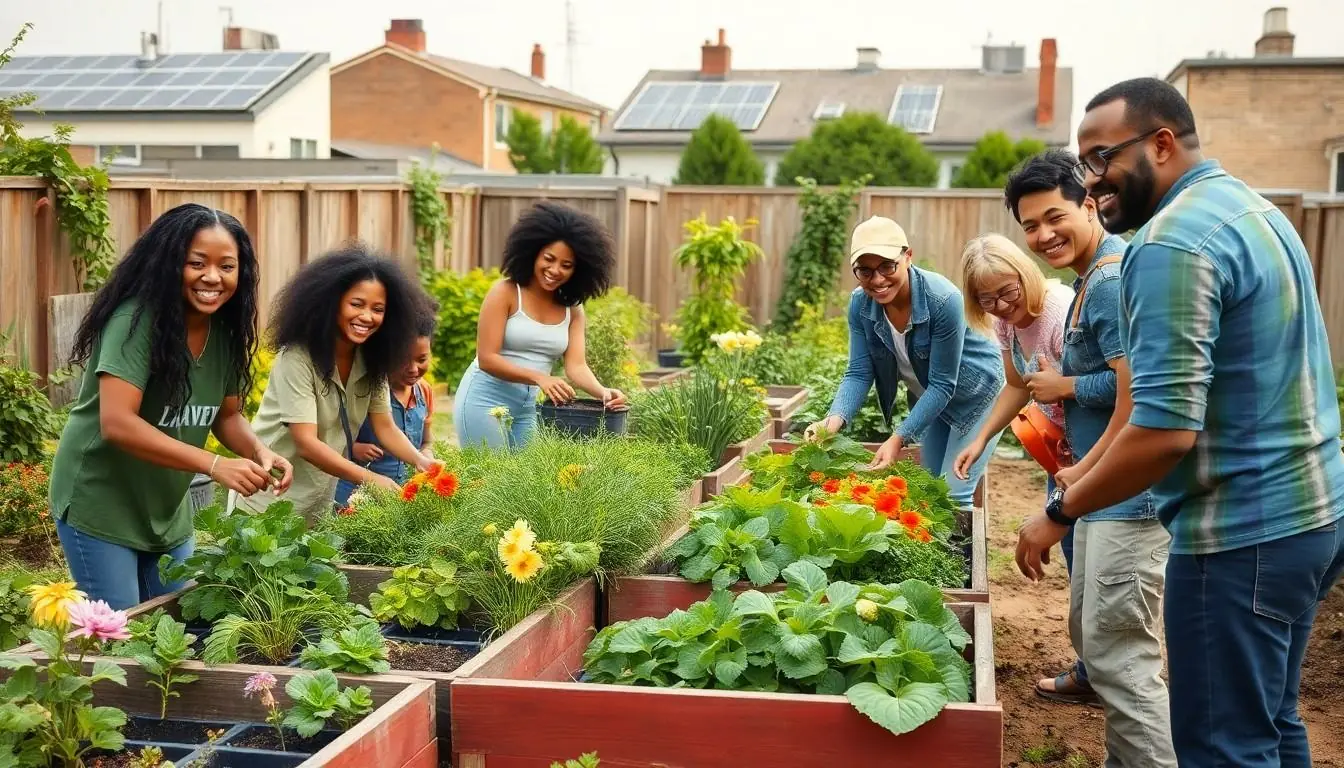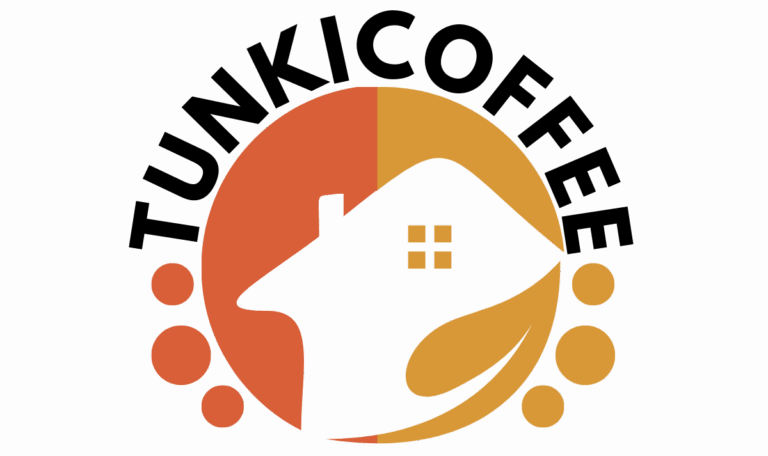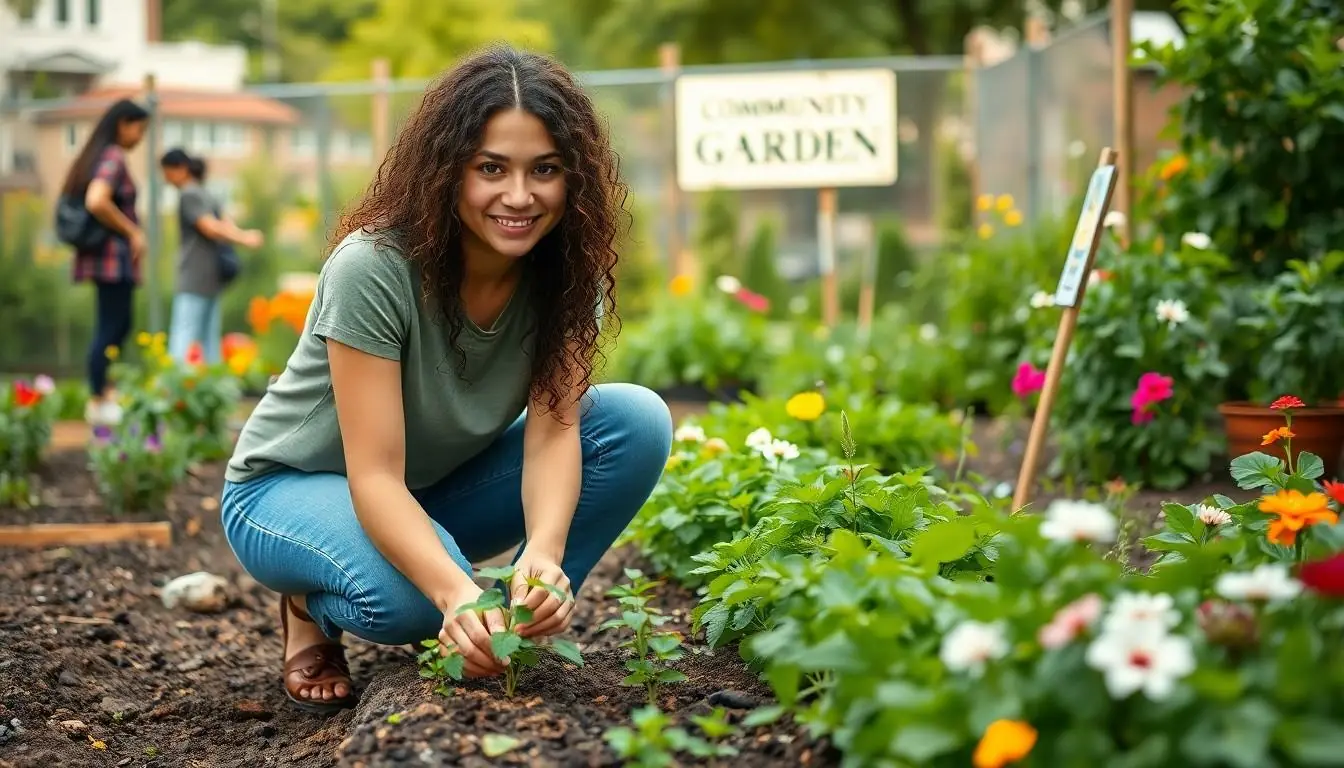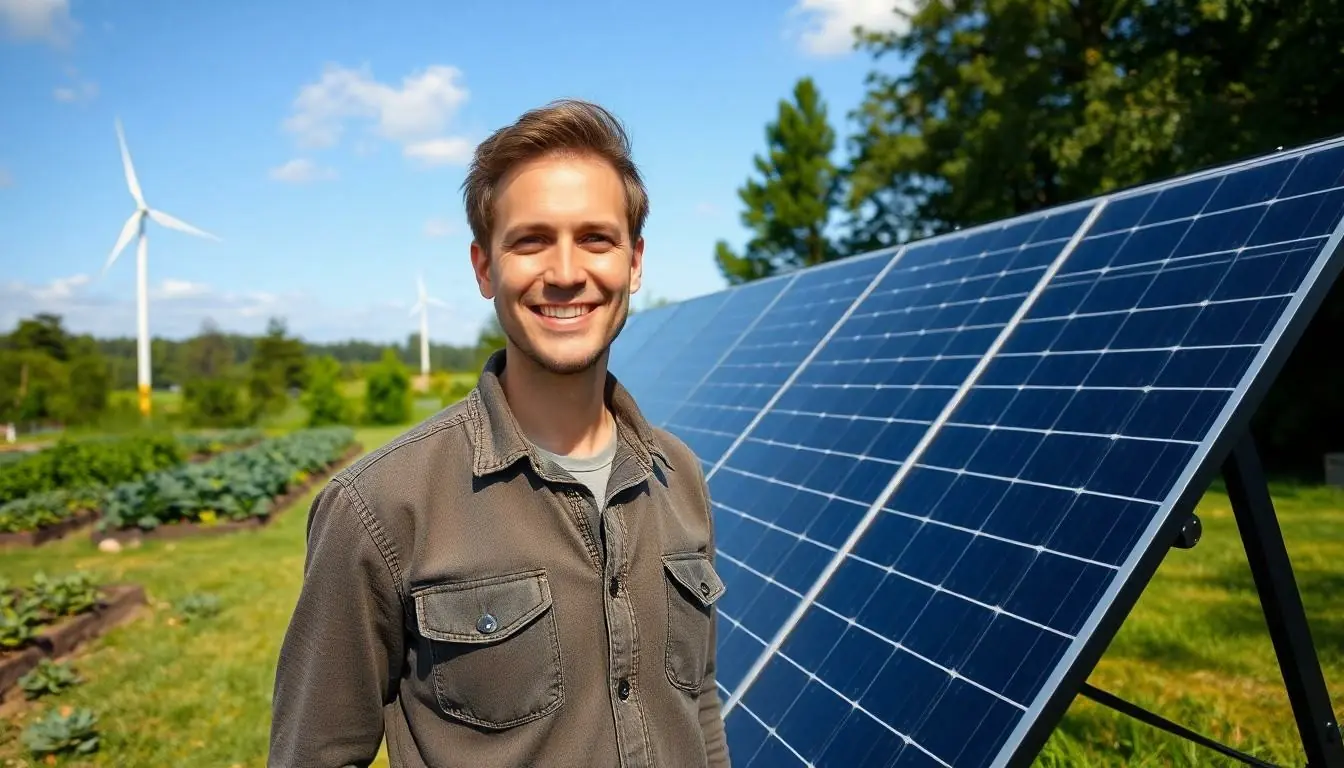In a world where plastic straws seem to multiply like rabbits and carbon footprints are trending harder than the latest TikTok dance, sustainable living solutions have never been more essential. It’s not just about saving the planet; it’s about making smart choices that keep your conscience as clean as your reusable shopping bags.
Table of Contents
ToggleOverview of Sustainable Living Solutions
Sustainable living solutions encompass a range of practices aimed at reducing an individual’s or community’s environmental impact. These solutions address pressing issues like plastic waste and climate change. Incorporating eco-friendly habits leads to a decrease in resource consumption and fosters a healthier planet.
Urban gardening represents one significant approach to sustainable living. By cultivating plants in small spaces, individuals provide food for themselves while promoting biodiversity. Engaging in composting further enhances sustainability by converting organic waste into nutrient-rich soil.
Utilizing renewable energy sources is another crucial solution. Solar panels and wind turbines allow households to generate clean energy, reducing dependency on fossil fuels. Homeowners realize long-term savings on energy bills while decreasing their carbon footprint through these technologies.
Transportation plays a vital role in sustainable practices. Opting for public transit, cycling, or walking lessens greenhouse gas emissions. Electric vehicles, when used, significantly cut down on fossil fuel consumption, contributing to cleaner air and healthier cities.
Waste reduction strategies are essential for sustainable living. Adopting a zero-waste lifestyle encourages individuals to minimize trash outputs by reusing and recycling consumables. Supporting local and eco-conscious businesses promotes sustainable production methods and reduces the environmental toll of long-distance shipping.
Education and awareness enhance the adoption of these solutions. Sharing knowledge about sustainable choices empowers communities to make informed decisions and implement practices that align with environmental goals. Through collective efforts, sustainable living becomes not just a personal choice but a shared commitment to preserving the planet for future generations.
Benefits of Sustainable Living

Adopting sustainable living solutions offers numerous benefits that positively impact individuals, communities, and the planet.
Environmental Impact
Sustainable living significantly reduces environmental degradation. Implementing practices like urban gardening and composting leads to healthier ecosystems and promotes biodiversity. Households that utilize renewable energy sources, such as solar panels or wind turbines, contribute to cleaner air by decreasing reliance on fossil fuels. Choosing eco-friendly transportation methods, such as cycling or public transit, lessens greenhouse gas emissions, improving overall air quality. Moreover, adopting waste reduction strategies diminishes landfill contributions and encourages recycling. Collectively, these actions foster a sustainable future and mitigate climate change effects.
Economic Advantages
Sustainable living solutions provide valuable economic benefits. Savings manifest in reduced utility bills when households opt for renewable energy sources. Local economies thrive as individuals support eco-conscious businesses, which often prioritize sustainable practices. Investment in energy-efficient appliances yields long-term savings and enhances property values. Additionally, expenditures on public transit, biking, or walking decrease transportation costs significantly. Individuals adopting a zero-waste lifestyle often find creative ways to repurpose materials, saving money in the process. Embracing sustainability not only benefits the environment but also strengthens economic resilience.
Practical Sustainable Living Solutions
Adopting sustainable living solutions involves practical steps to enhance daily life while reducing environmental impact. These actions contribute to creating a healthier planet.
Energy Efficiency
Enhancing energy efficiency leads to significant savings and reduced carbon footprint. Households can start by using Energy Star-rated appliances that consume less energy. Switching to LED lighting further minimizes electricity use, promoting longevity and lower utility bills. Smart thermostats help optimize heating and cooling systems, ensuring comfort without unnecessary energy waste. Insulating windows and doors can prevent heat loss, improving energy conservation. Every small adjustment in energy usage creates a ripple effect contributing to a greener environment.
Water Conservation
Implementing water conservation measures proves essential for sustainable living. Installing low-flow faucets and showerheads drastically reduces water usage without sacrificing performance. Collecting rainwater for gardening benefits both plants and water resources. Choosing drought-resistant plants for landscaping further minimizes demand on local water supplies. Fixing leaks promptly ensures no water is wasted, addressing a common issue in many homes. These methods promote responsible water consumption and contribute to the preservation of this vital resource.
Waste Reduction
Minimizing waste stands as a critical component of sustainable living practices. Embracing a zero-waste lifestyle involves reducing, reusing, and recycling materials. Individuals can opt for reusable containers, eliminating the need for single-use products. Supporting local farmers’ markets fosters a community-focused approach that reduces transportation emissions. Composting organic waste not only diverts materials from landfills but enriches soil for gardening. Adopting these strategies cultivates a culture of sustainability, directly impacting local and global environments.
Community Initiatives for Sustainable Living
Community initiatives play a crucial role in promoting sustainable living. These programs foster collaboration and empower residents to adopt eco-friendly practices.
Local Sustainability Programs
Local sustainability programs encourage community involvement and awareness. Numerous cities offer workshops on composting and urban gardening, creating opportunities for residents to learn and share experiences. Neighborhood clean-up events promote litter reduction and environmental stewardship. Community gardens not only supply fresh produce but also strengthen social ties. Some municipalities provide incentives, like tax credits for energy-efficient home upgrades, motivating families to reduce their environmental impact.
Collaborative Projects
Collaborative projects enhance community engagement around sustainability. Partnerships between local governments and nonprofits often lead to innovative solutions for waste reduction and energy conservation. Residents participate in tree-planting days, contributing to reforestation and biodiversity. Schools engage in sustainability-focused initiatives, encouraging students to embrace eco-friendly habits early. Programs that involve local businesses focus on sustainable practices, offering resources and support for sustainable production methods. These projects foster a sense of ownership and accountability among community members, driving long-term changes in behavior.
Embracing sustainable living solutions is a vital step toward a healthier planet. By making conscious choices in daily life individuals can significantly reduce their environmental impact while enhancing their quality of life. From urban gardening to renewable energy adoption these practices not only benefit the earth but also foster stronger communities.
As awareness grows and more people engage in eco-friendly initiatives the collective effort will lead to meaningful change. The journey toward sustainability requires commitment and collaboration but the rewards are immense. Together they can create a brighter future for generations to come.







